B2B Community Marketing: MPG’s Strategic Approach
Strategy-led organisations will usually have a chosen set of models or frameworks to guide their thinking and execution. For those of us focused on marketing strategy, MPG has created some straightforward frameworks to contextualise the marketing that goes in to engaging, monetising and scaling B2B communities – specifically for B2B media brands and event organisers. And here they are!
MPG’s Engage, Monetise, Scale Model
 Engage is the first and most important step. This is where marketing works its magic by identifying, attracting and keeping the attention of the most relevant people to your community. There are many channels and techniques for achieving this, but the end goal is always to grow your engaged community, as well as the level of that engagement.
Engage is the first and most important step. This is where marketing works its magic by identifying, attracting and keeping the attention of the most relevant people to your community. There are many channels and techniques for achieving this, but the end goal is always to grow your engaged community, as well as the level of that engagement.
Monetisation relies on engagement to be effective – or even possible at all. You cannot progress to this stage until you have a sufficiently good quality, engaged audience. The engage phase is essential for identifying what your community members most value and are therefore willing to pay for. Knowing what your audience finds most valuable creates opportunities to monetise existing and future content, events, research and other solutions you deliver for your community – via payments by the readers/audience/participants. Another key way to monetise your community could be via sponsorship – depending on your business strategy and model. This relies on having an engaged community of the right size and profile so that your sponsors can hit their mark when paying to advertise via your channels.
Scale is the final stage of the model. As with monetisation, the preceding phases are important to consider first. You only want to scale an audience you’re confident you understand and can engage with, and you want to be scaling a monetisation model that you believe has sustainable, long-term potential. Once you have these in place, you can begin investing in the processes, automations and resources that will increase your profit margin. Hyperscale is an extension of scale and occurs when your scaling efforts reach a point of exponential growth. At this point, your community model becomes effectively self-sustaining in its growth. The more effectively the prior three steps are implemented, the more likely it is that ‘hyperscale’ will kick in.
MPG’s Community Development Model
This model provides a simple method of categorising your community members by both their level of engagement, and their monetary value to you and your sponsors. You can use it to understand how your community is spread across these levels, with your objective being to move as many people as far up the levels as possible.
To make full use of this framework, overlay other segmentation such as company type, job function and seniority – to get a full picture of your community.
Level 1 – Lurkers: consumers of free content (blogs, social media) via website and social channels. At this stage, you do not have the user’s data.
Level 2 – Contacts: known contacts in your database. This allows you to track engagement more accurately and also target with email and other direct marketing comms to increase engagement.
Level 3 – Freemium: committed contacts in a free capacity – e.g. signing up to a free newsletter or attending a webinar. Again, your goal here is to increase levels of engagement. And here you want to start paying close attention to what they are consuming, and value the most, in the free content you are pushing out.
Level 4 – Transactionals: paying customers who have made one-off, relatively low value purchases e.g. a training course or a report. You really want to pay close attention now to what content people are willing to pay for – and how much.
Level 5 – Loyalists: paying customers who make larger purchases of renewing products. This is the group you want to focus on growing fastest, retaining and upselling. This relies on marketing and sales automation and integration.
Level 6 – Leaders: enterprise-level customers who make purchases for whole teams/departments/businesses to access renewing products. The nirvana of B2B media! If you’ve cracked this level, you’re well in to scale, with hyperscale on the horizon...
Where Does Sponsorship Fit In?
This model demonstrates a simple concept: sponsors are likely to be willing to pay more to reach your more engaged community members (assuming they are of the right profile).
Viewing sponsorship opportunities via this model will also allow you to consider the different companies that will likely be interested in each audience. A SaaS tool provider may be more interested in reaching a high volume of your community to generate awareness and leads – so levels 3, 4 and 5 in your community (e.g via newsletters adverts or sponsored webinars or reports) may be their best ‘hunting grounds’. An advisory firm on the other hand may value more the intimate conversations in smaller groups with level 6 Leaders – where round-table-style events (online or offline) seem to have an evergreen attraction.
You ideally want to grow every level to ensure a healthy, growing community and sustain a steady and growing volume of relevant audience members. This is the best way to guarantee strong YOY growth of sponsorship revenue.
Patience and Time
The great Leo Tolstoy famously wrote “Patience is waiting. Not passively waiting. That is laziness. But to keep going when the going is hard and slow - that is patience. The two most powerful warriors are patience and time.”
2021 – or certainly the first part of the year – will most certainly require an awful lot of patience from companies and individuals as we wait for the pandemic to ease off (which we are confident it will!). And this may take longer than we hope or expect. But now is not the time to lose hope or sit back and wait. Now is the time to get stuck into your community marketing strategy. Don’t wait any longer – but also be patient. Play the long game. Focus on community quality and engagement first and foremost – even if it means you lose money in the short term. Try out different monetisation models and work out what your community is willing to pay for and what you can profitably deliver. When summer eventually arrives (literally or figuratively!), if you’ve done a good job of engaging your community at a time when they probably need you most - you will be in a great place to benefit from more profitable monetisation, with scale just around the corner!



